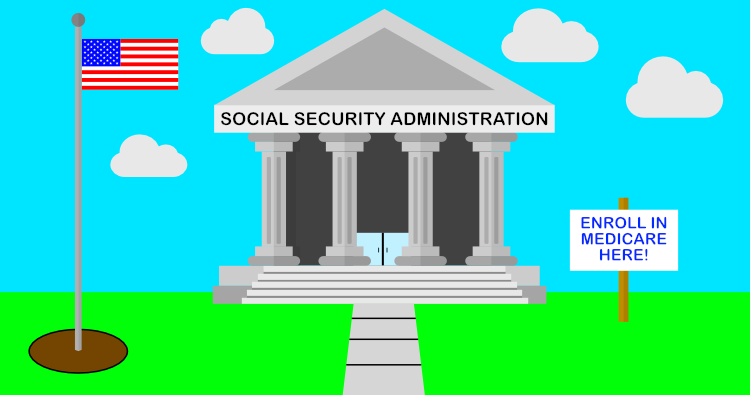I know, you’re planning on working forever, right?
Either you like your job and don’t want to retire any time soon. Or, you need something to keep yourself busy, since you think you’d have nothing to do in retirement and get bored senseless within a month. Maybe you feel like you can’t afford to retire financially.
Whatever your reason for working past 65, eventually you’ll get to a point where you do need to retire. It may be because you can’t take the office politics anymore. Or maybe you need to stay home and take care of a loved one whose health is failing.
When you get to that point, you’ll need to get signed up for Medicare and figure out what you need to do about secondary insurance. This article is to help prepare for that transition to be as smooth as possible.
So whenever you do leave your (or your spouse’s) employer’s group health plan…
More...
Get a quote on Medigap plans in your area
You’ll Have a Medicare Special Enrollment Period
You have an 8-month period to enroll in Medicare after your employment ends or your group health coverage ends, whichever comes first. Also, you can sign up for Medicare any time while you’re currently still covered by your group plan; you don’t have to wait until you actually retire. That way you can coordinate your Medicare start date with your current coverage ending so you don’t have any gaps in coverage.
You can take one of two courses of action, depending on if you’ve signed up for Medicare Part A only, or haven’t signed up at all yet…
If You Have Medicare Part A Only
If you have Medicare Part A only when you retire, then you need the following 2 forms in order to sign up for Part B:
- CMS 40B – This form is the actual application for Part B. There’s a section labeled “Remarks” towards the end. Put your preferred Part B start date in this section. Keep in mind that Medicare can only start on the first day of the month.
- CMS L564 – This is called the Request for Employer Information form. You’ll need to fill out part of it, and your employer will need to fill out part. This form is just to verify that you had coverage through the employer’s group plan so you don’t get charged a Part B late enrollment penalty.
You can click each of the form number links above to get the actual forms on the Medicare website where you can print them off.
Once these forms are all filled out, I recommend hand delivering them to the Social Security office about 4-8 weeks before your desired start date. If you mail them to Social Security, they could get stuck in a pile of papers and not processed until after your desired date.
If You Haven’t Signed Up For Medicare at All Yet
If you did not sign up for any part of Medicare at 65, the best thing to do is either to call Social Security, or to go to your local Social Security office to enroll in Medicare A & B. They’ll ask you when you want Medicare to start, and you can coordinate it with the termination of your group plan as best as you can. They’ll have all the forms you need to get signed up for both Parts of Medicare.
Now the next step is that…
You’ll Need Some Type of Supplemental Insurance to Medicare
Once you get the enrollment in Medicare taken care of, you’ll need some type of insurance to supplement it. Almost everyone in this position will have 3 main options to get your supplemental insurance:
Retiree coverage from your employer
You possibly could have some type of decent retiree health coverage from your employer, but this type of coverage is becoming increasingly rare.
However, if you did retire as some type of government or union retiree, there’s a chance you have a decent healthcare plan as their retiree. Check with your employer’s benefits department at the same time they fill out their part of the L564 form.
Keep in mind, even though you may have a decent health plan through your former employer, you do still need to get Part A & Part B, regardless.
If you’re in the majority of folks that don’t have retiree coverage, you’ll need to pick up some type of supplemental plan. You’re going to be best off working with an independent agent, like me, who can help you shop the dozens of plans in your area and find one that works best for you and your situation.
Your two options to get insurance not through your former employer are either a…
Medicare Advantage Plan (MA)
You need to have Medicare Part A and Part B to both be active to enroll in a MA plan. If you don’t have Part B active while you’re still working, you just have to wait for your Part B effective date before your MA Plan can start.
Your enrollment periods (the time when you actually apply for the MA plan) are going to be a little bit different depending on whether or not you have Part B already:
- If you have Part B already, you can only sign up for the MA plan within 2 months after the month that your employer coverage ends. Your plan will generally start the first day of the month after you enroll. See Example #1 below.
- If you don’t have Part B yet, you can sign up for the MA plan within 2 months after the month that your employer coverage ends. With this Special Enrollment Period, your plan will generally start the first day of the month after you enroll, as long as it’s on or after your Part B effective date. Or, you can sign up in the 3-month period before your Part B effective date. Using this enrollment period, your plan would start on your Part B effective date. See Examples #2 and #3 below.
Example #1: Your employer group plan is expiring on June 30th. You can sign up for an MA plan in June so it can start July 1st. If you wait to enroll until July, the MA plan won't start until August 1st.
Example #2: Your employer plan is ending May 31st. You have Part A only currently. You want your MA plan to start June 1st, but you wait until the very end of May to sign up for Part B. The Social Security office can't process your paperwork fast enough for a June 1st effective date. So, you have to wait until July 1st for Part B and your MA plan to start.
Example #3: Your employer group plan is expiring on June 30th. You go down to the Social Security office in April and tell them you'd like Part B to start on July 1st. If you fill out an MA application in April, May, or June, then it will start on July 1st.
Or, you can sign up for a…
Medicare Supplement + Prescription Drug Plan (PDP)
You can get a Medicare Supplement, which is also known as a Medigap policy, to go along with Medicare Parts A & B. This policy will cover most or all of the Medicare deductibles, coinsurance, and copays. You also can get a PDP to cover your prescriptions.
The enrollment periods for these plans are a bit different than those mentioned above for the MA. For Medigap plans:
- If you have Part B already, you only have a Medigap Open Enrollment (OE) Period that lasts for 6 months after the time you are both 65 and older and have Part B effective. So if you are retiring after 65 and have had Part B effective for more than 6 months, you’re not in your OE period anymore.
This doesn’t mean you can’t get a Medigap plan or have to wait until later to sign up, it just means you’ll have to answer health questions and could possibly be turned down by different insurance companies for different health conditions. However, each Medigap company treats this situation of leaving employer coverage a little bit different, and each company has different health conditions that they will either accept or decline you for, so it’s best to work with an independent insurance agent who can find you the best company to go with depending on your unique situation.
Most Medigap companies will allow your plan to start on most days of the month, and not be confined to just starting the first day of the month, as it is with MAs. - If you don’t have Part B yet, your Medigap plan can start the day Part B is effective. Most Medigap companies will allow you to enroll in the 6-month period leading up to your Part B effective date.
For the PDP’s, again here enrollment periods are just a bit different. Whether or not you have Medicare Part A only, Part A & B, or neither one, you can only sign up for the PDP plan within 2 months after the month that your employer coverage ends. Your plan will generally start the first day of the month after you enroll.
Want to discuss your situation with a Medicare expert? Click the button to book a FREE personal 1-on-1 consultation.
Conclusion
So, that is a pretty in-depth look of the steps you need to take, and when you need to take them, in order to transition from your employer plan to Medicare. Hopefully this guide can make the process much smoother for you and give you more confidence in taking the right steps at the right times.

